
Video-based restaurant discovery & booking
Problem & Context
Post-pandemic, restaurants need a way to attract new customers & boost their online image. The founder of TableTop approached me to design prototypes to test with potential customers (restaurant owners) to determine the viability of video-based approach to increasing restaurant reservations.
Goal: Design a prototype to get buy-in from restauranteurs.
Role: UX | Given: Brand assets
Step 1 · Questions
I started with a list of open questions I had to better understand the problem space. I interviewed several friends to get a sense of how they search for restaurants/make reservations and the CEO interviewed restaurant operators & influencers to report back with her findings before moving forward with designs.
Restaurant Operators
Do you care who your customers are? Do you want a specific type of diner or do they just want more business?
Why do some restaurants take reservations while others do not?
Restaurant operators seem to prefer flat-rate, predictable pricing, but what happens if it’s super successful (to pay affiliates)l? Would you be open to a further investment for increased visibility? Tiered pricing, perhaps?
How much are you leveraging Google reviews and getting customers to leave reviews?
Is there an incentive structure for reviews? Do you feel that reviews accurately reflect the quality of your services?
How challenging is it to manage different tech platforms (specially if there are multiple options)?
OpenTable
Resy
DoorDash
Uber Eats
Postmates
Internal POS system (Square?)
Do lines from takeout and delivery impact dine-in experience?
How did reduced capacity impact restaurant perception and the diner experience? Do people assume they can’t get a reservation and no longer try? Did they get frustrated by previously not being able to get a reservation and therefore no longer try? (also Q for diners)
How has Instagram impacted overall branding and design? Is there pressure to maintain a certain “aesthetic”?
How [if at all] do you track the conversion rate from social media?
Food & Restaurant Influencers/Creators
How do you feel about affiliate model vs. guaranteed base pay or project-based fee?
How do you choose which restaurants to work with? Passion/interest/alignment > $$$?
How do you find partnerships?
How do you figure out how much to charge?
What is considered a “successful” post? What happens if a post is not successful?
Would a creator rather create content for their own page (on behalf of the restaurant), content for the business that isn’t connected to their page, or both?
What rewards/pay/benefits (if any) have restaurants offered for sharing your experience visiting their location?
How did the pandemic and limited in-person dining impact their business?
How do you keep your content fresh and original, especially once/if you have a niche?
Will you share a restaurant even if you don’t like it? Do you require having tasted the food first or is it sometimes more about the aesthetic/type of food/novelty?
What are your most successful channels? What are the differences in how you create/share content based on each platform?
TikTok
Instagram
YouTube
What content does your audience seem to resonate with the most?
How [if at all] do you track conversion when sharing a specific restaurant (for a partnership)?
Diners
Do you rely more on photos and videos vs. written reviews? Does the space matter or the food/drinks itself (photos-wise as well)?
How did reduced capacity impact restaurant perception and the diner experience? Do people assume they can’t get a reservation and no longer try? Did they get frustrated by previously not being able to get a reservation and therefore no longer try?
[How] do lines from takeout and delivery impact your dine-in experience?
What are the most important factors when it comes to booking a reservation?
What compels you to write a review for a dining experience?
Where do you go to look for restaurant reviews?
When you share a dining experience (on IG stories, for example), is it because you want…
People to see where you are
People to see that you’re having fun
To show off your meal or the location
People to visit the restaurant
To give the restaurant credit (or critique) for your experience
General (To find out or think about)
For the Instagram business profile “Reserve” button, is it Resy-specific or is it any link?
How do you collect reviews from people in a way that is trustworthy? How do you encourage people to leave reviews?
Step 2 · Defining Objectives
Based on early conversations, user interviews, and conversation, we came up with 4 design objectives for the scope of the project.
1. Video-based discovery
Create a fun and easy user experience to discover new places to dine in your city using video. Combine the TikTok experience with the Open Table search / book a table experience to create something fresh and fun — important that user can search easily and save a place easily.
2. Shoppable UGC
Design an experience that allows creators to post User Generated Content that can then be "shopped" by consumers
3. Creator Tools
What tools can we provide for creators that would allow them to create postable content easily? Creators are limited in how they can add links to IG videos or TikTok videos. That is where LinkinBio and Linktree come in. Can we design another option that would make it perfect for linking to restaurants? How about a map or another landing experience?
4. Creator Insights
Creators want analytics. They want to know whether their audience engaged w/ high end or more affordable content. They want to know how much their audience is spending and what drove commissions
Step 3 · Inspo
I explored a variety of apps to look at 3 experiences:
“food porn” to understand how visual media can entice a potential patron
creator apps for sharing links & favorite products
restaurant/reservation booking apps

In-app story share (IG). This particular captions shows how looks can be deceiving. Space for text invites authenticity and clarification.

Click the tagged location to go to the profile. Relatively easy but may not always be intuitive. (IG)
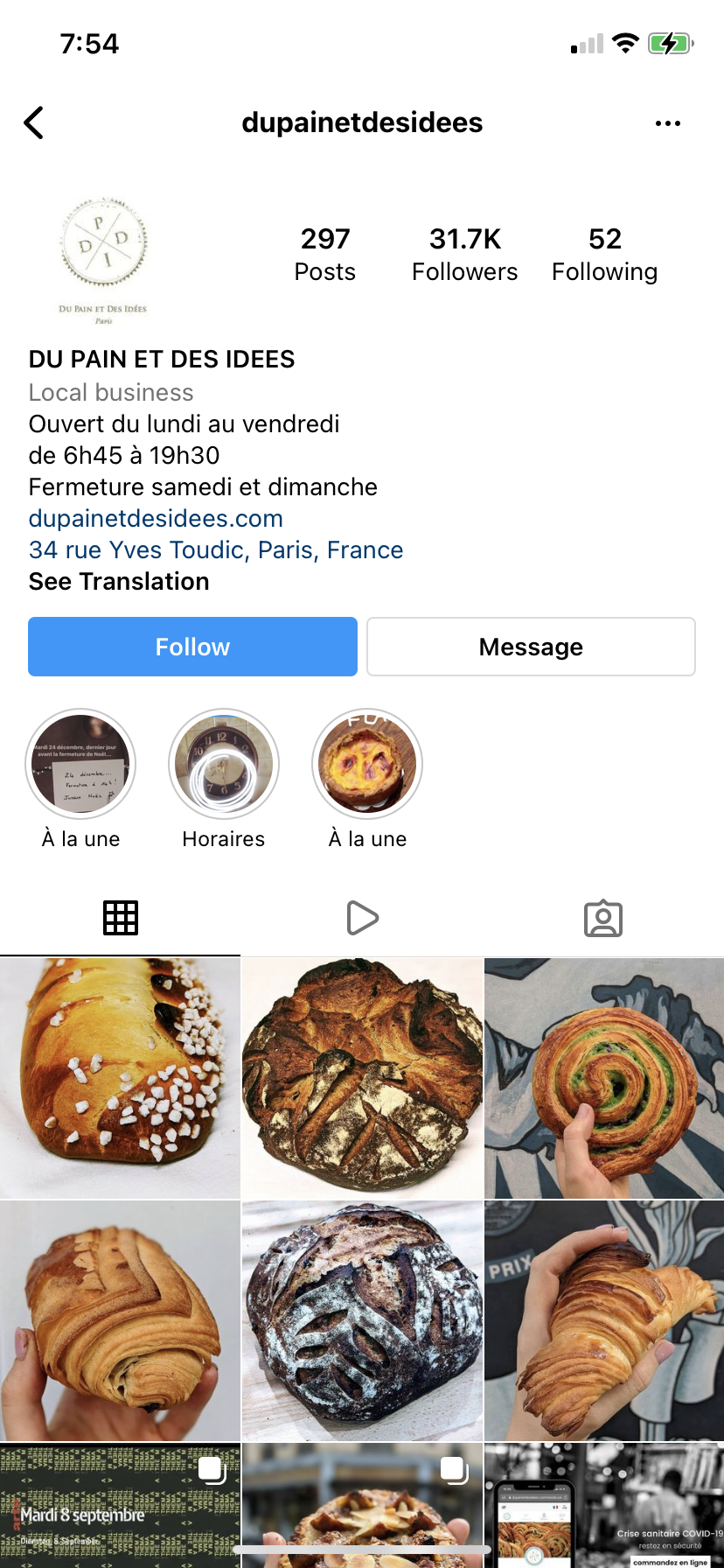
Restaurant profile, image heavy (vs video). Feels static. (IG)
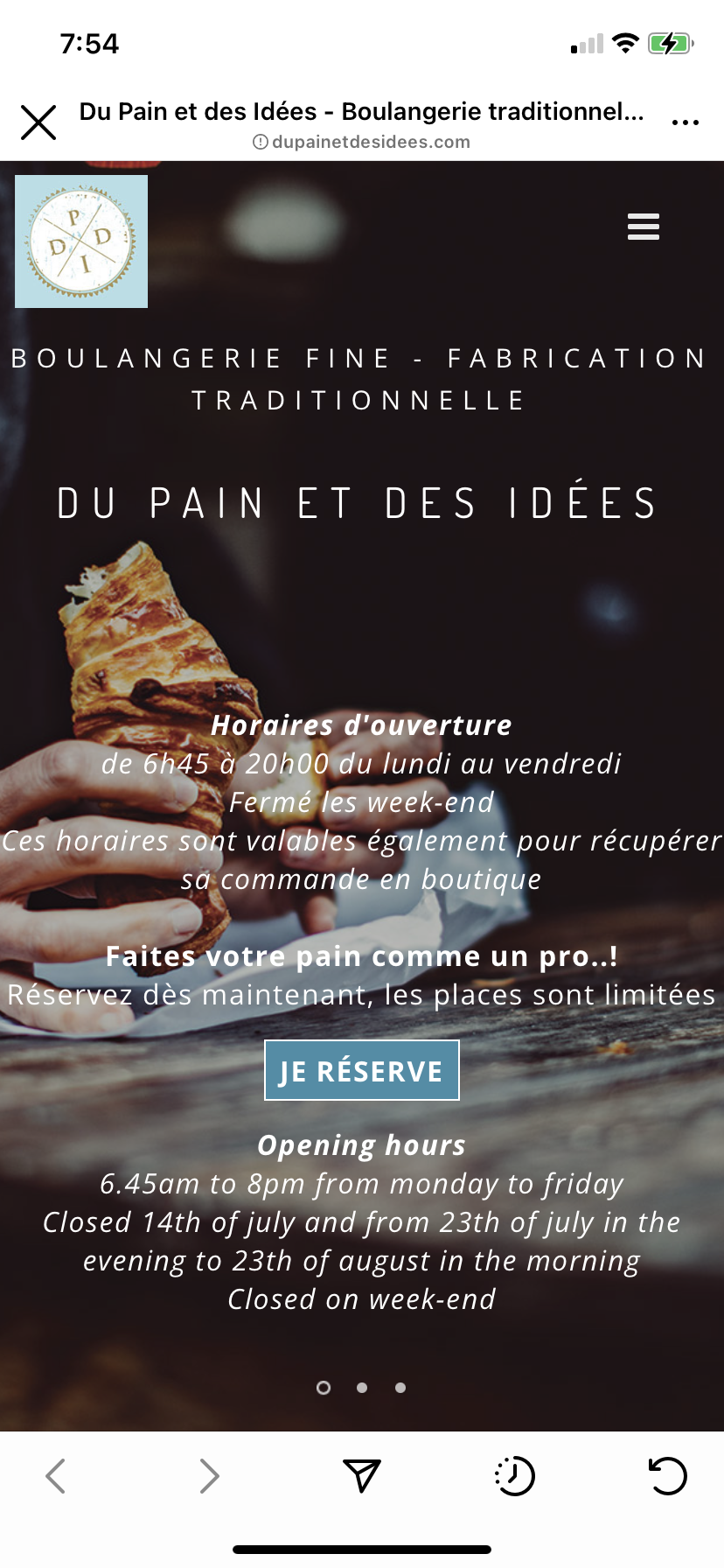
Restaurant website to book a table. (via IG)
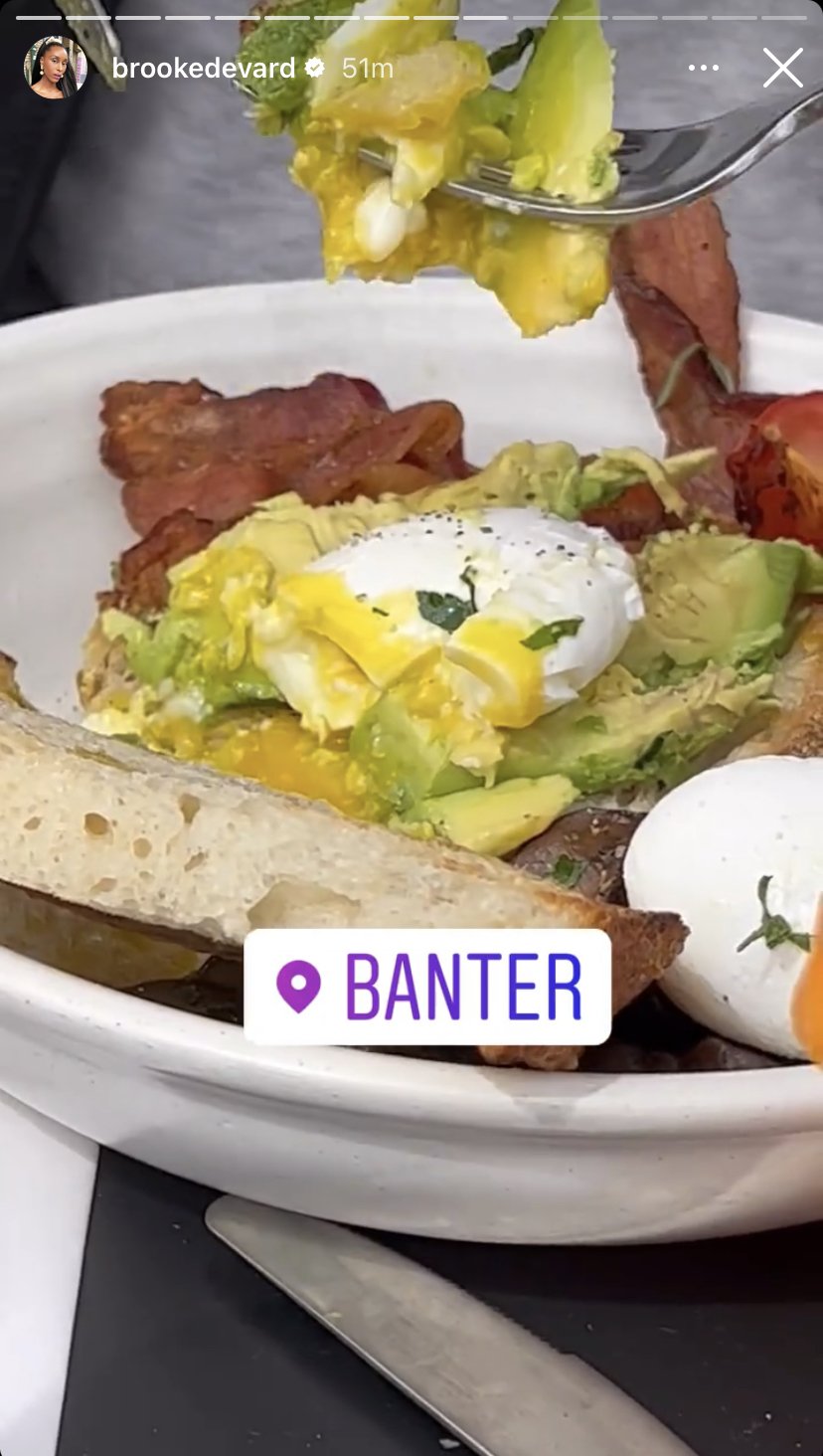
Video in story more inviting. Feels "real." and looks delicious. 😋 (IG)

Tagged photos at a specific restaurant in Instagram. Shows variety. People want to see the food. Images of people also humanizes the experience. (IG)
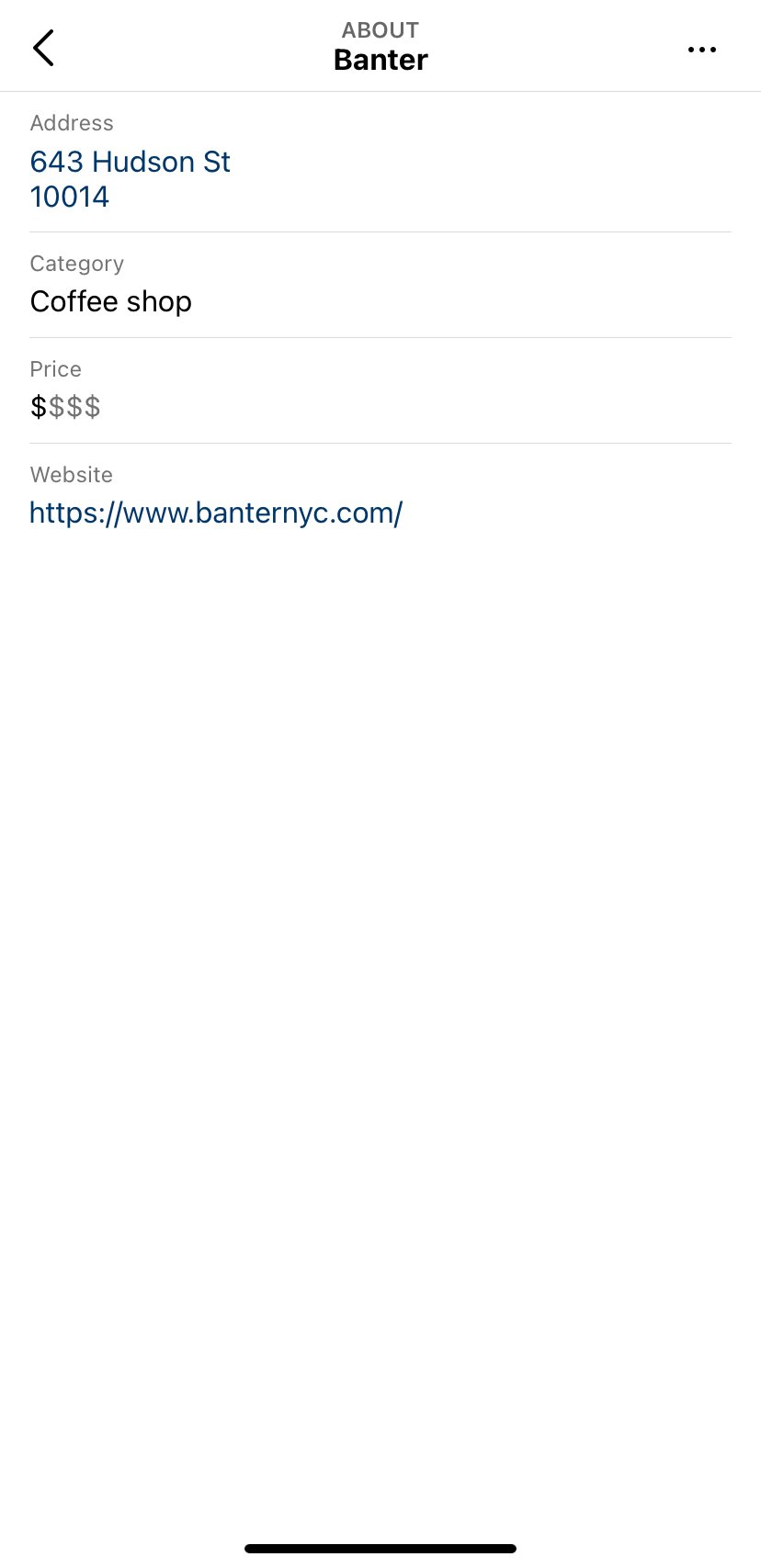
Restaurant details. Simple, basic. (IG)
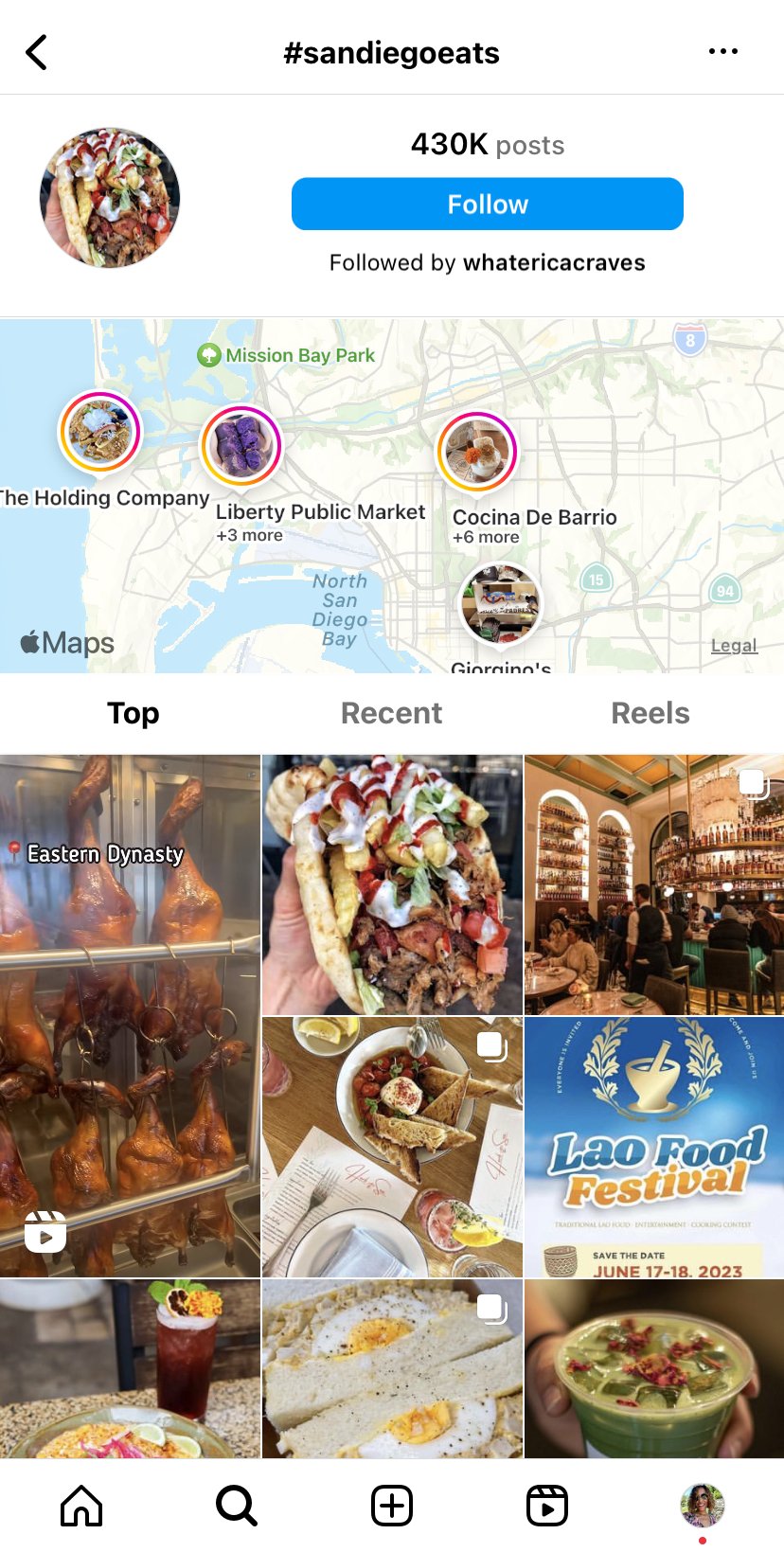
Feed for specific discovery tag. Prioritizes video. Most likely to click videos or images with closeup of the food (looks super yummy). Tagged locations in map view to orient the user & increase discoverability. Like the idea of stories (highlighted/colorful circle outline) > shows engagement & that location is hoppin - people want to be there. (IG)

Feed/board of local restaurants. Search-based with filters. Feels static, but clear messaging. (Pinterest)
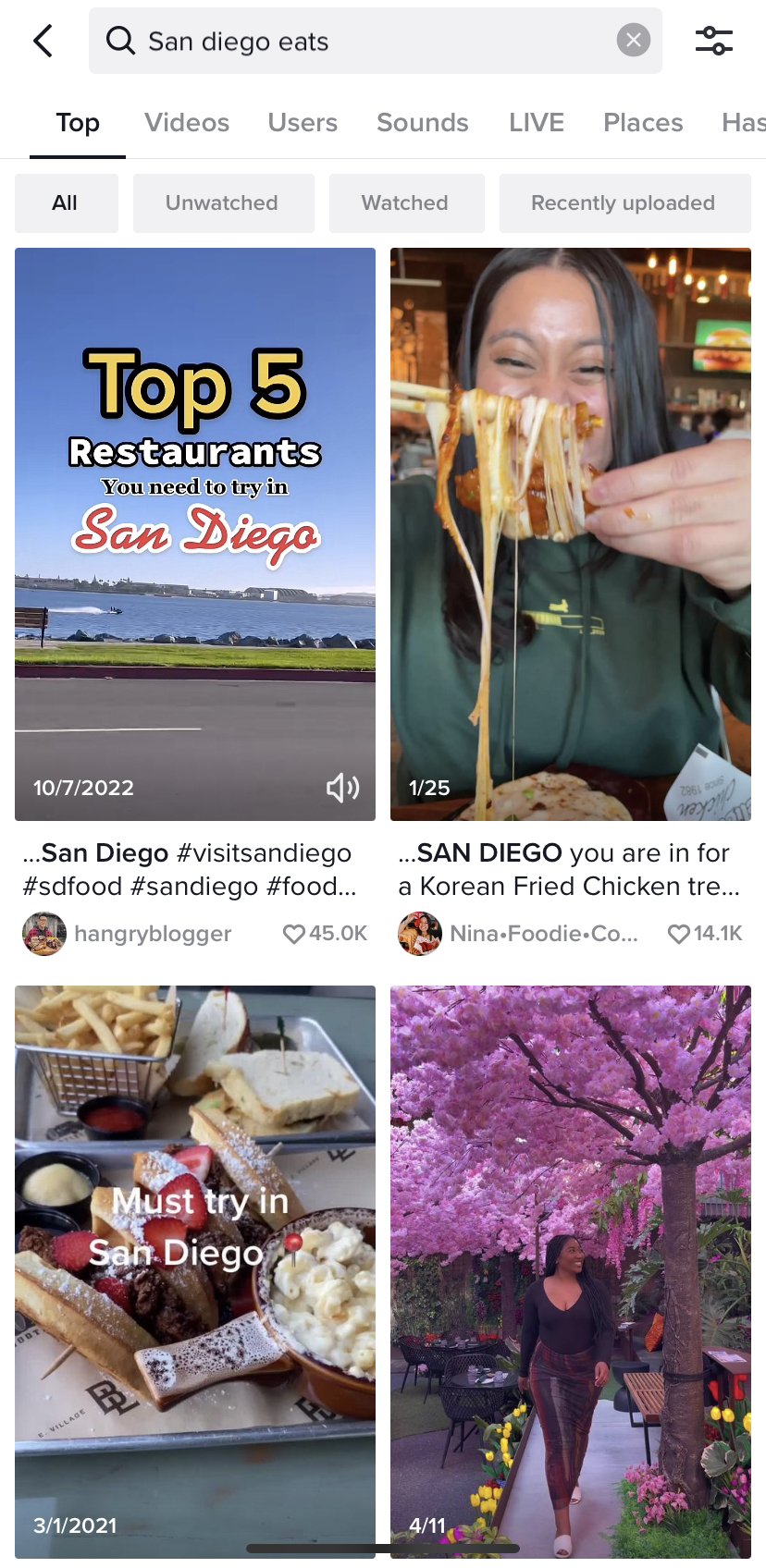
Search-based discovery feed. Video is engaging and can see # likes. (TikTok)
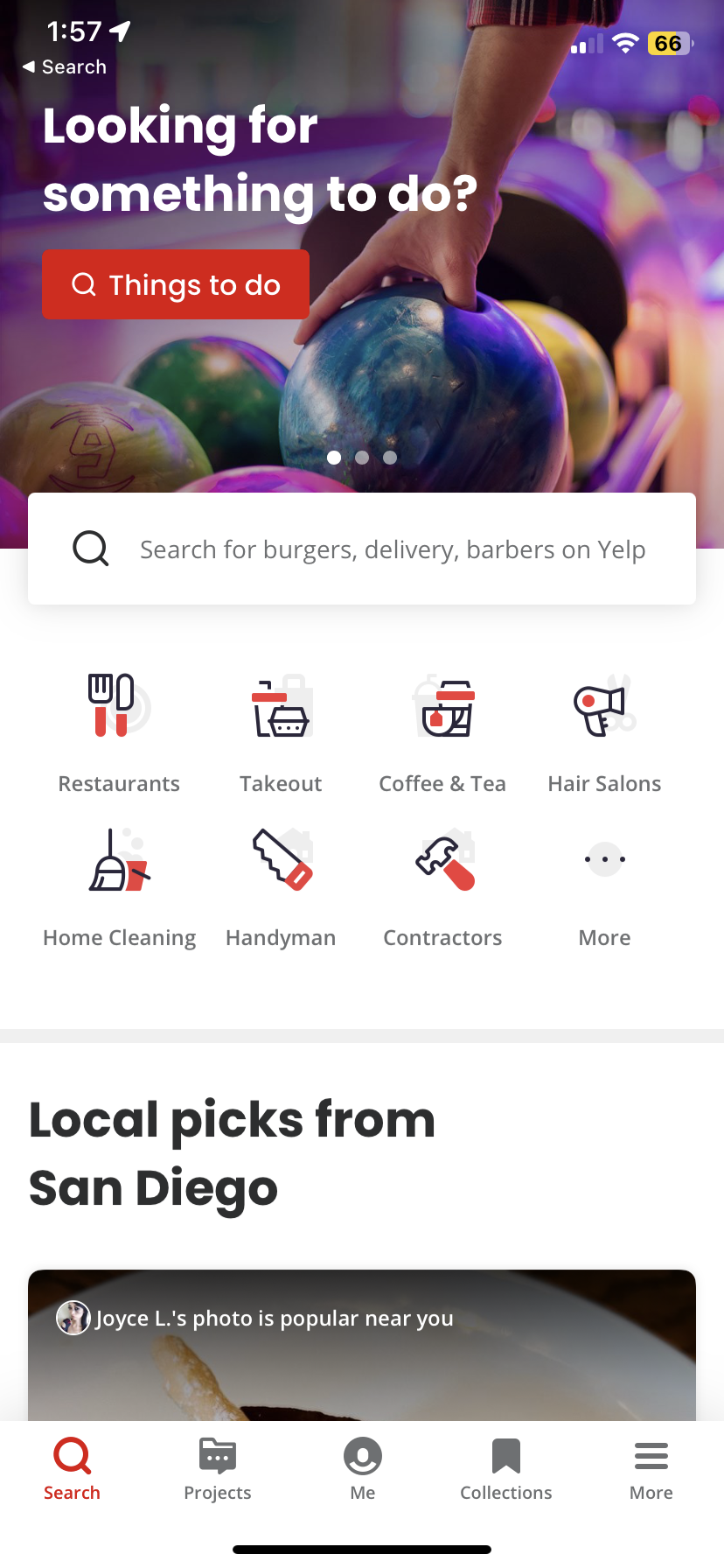
Search & topic-driven. Local picks would be helpful for discovery, but below the fold so have to scroll. Primary use case = search. (Yelp)

Feels like you have to know exactly what type of food you are searching for. Sponsored result super prominent and with a low rating, not very appealing. (Yelp)
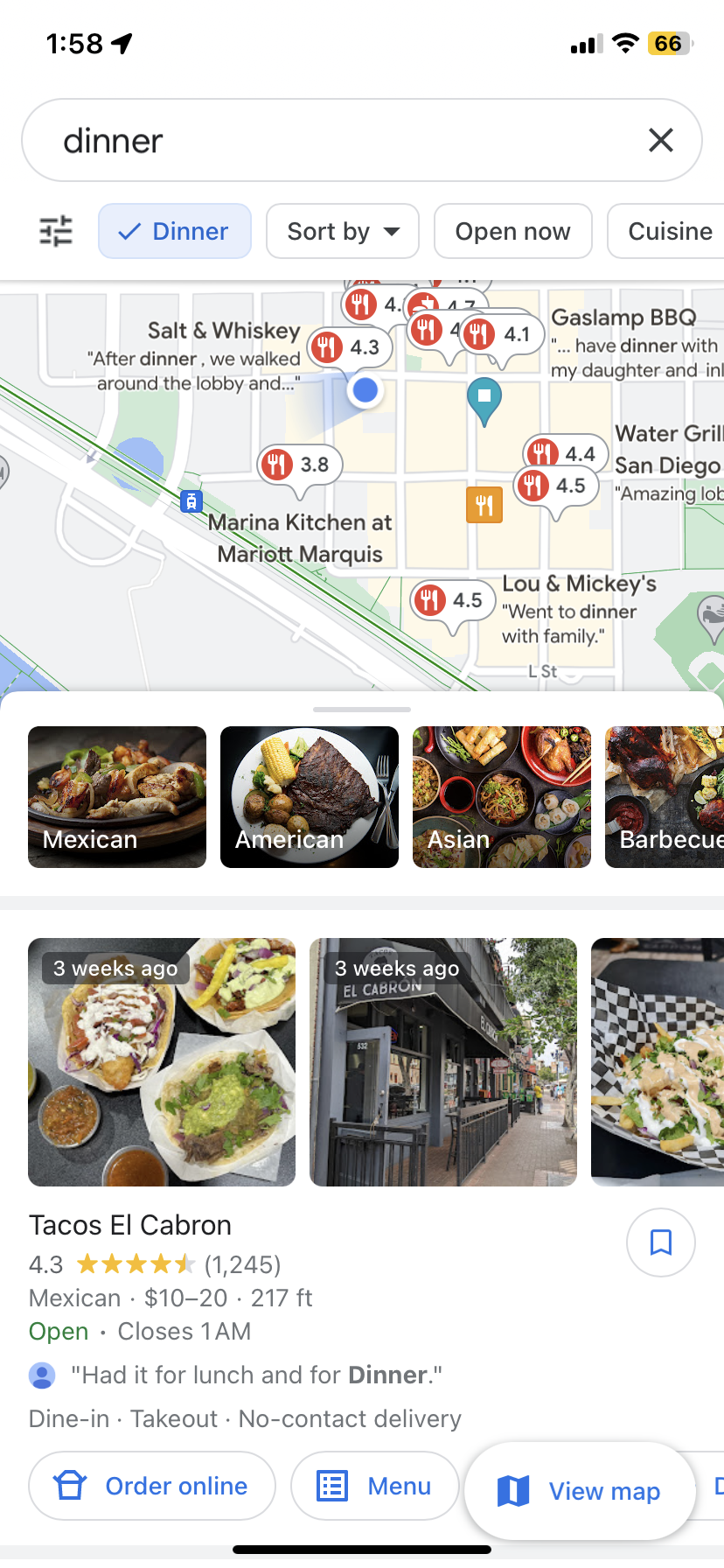
Images appealing, particularly of food. Map helps orient the user. Very location-based (makes sense). Quotation/review highlighted but not super prominent. (Google Maps)
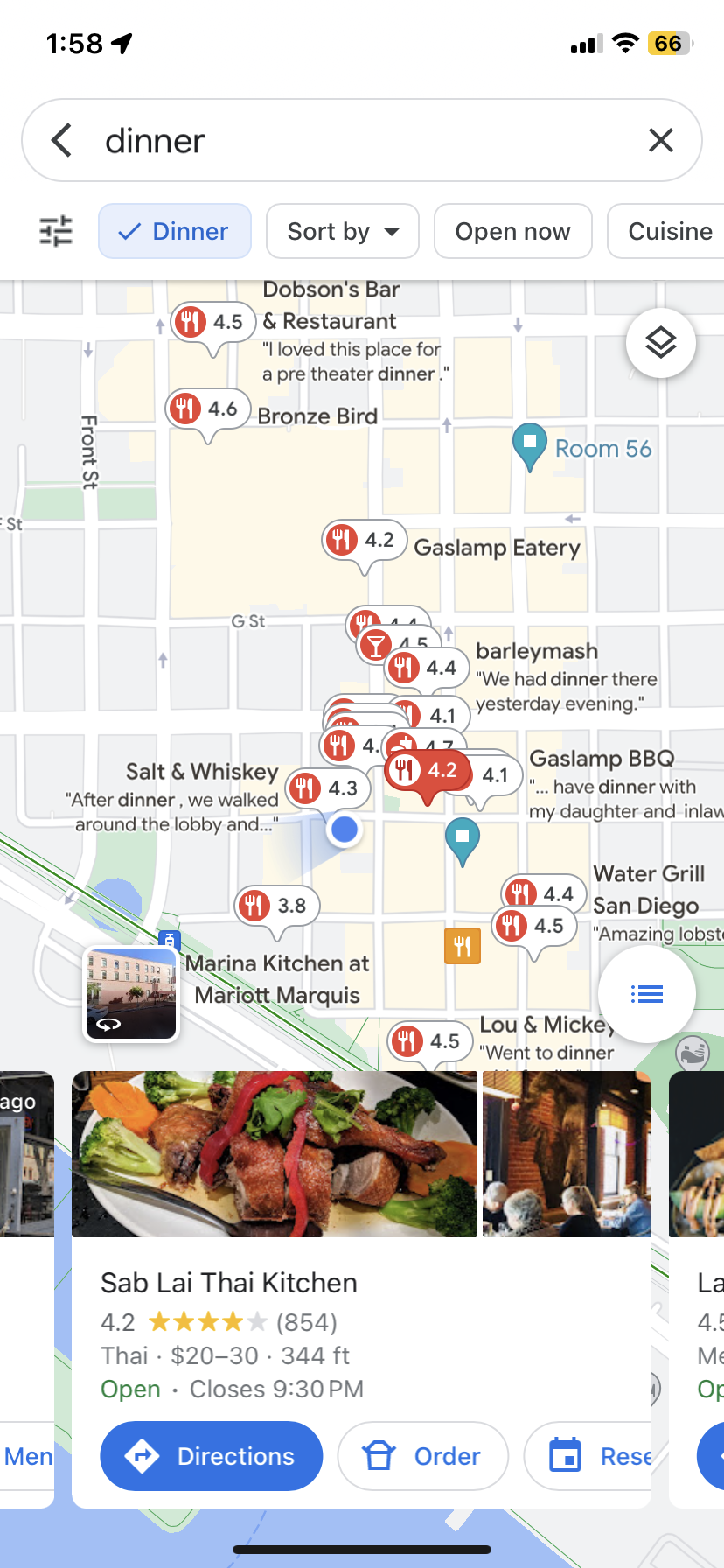
Very ratings-driven. Like the scrollable/scannable carousel at the bottom. (Google Maps)
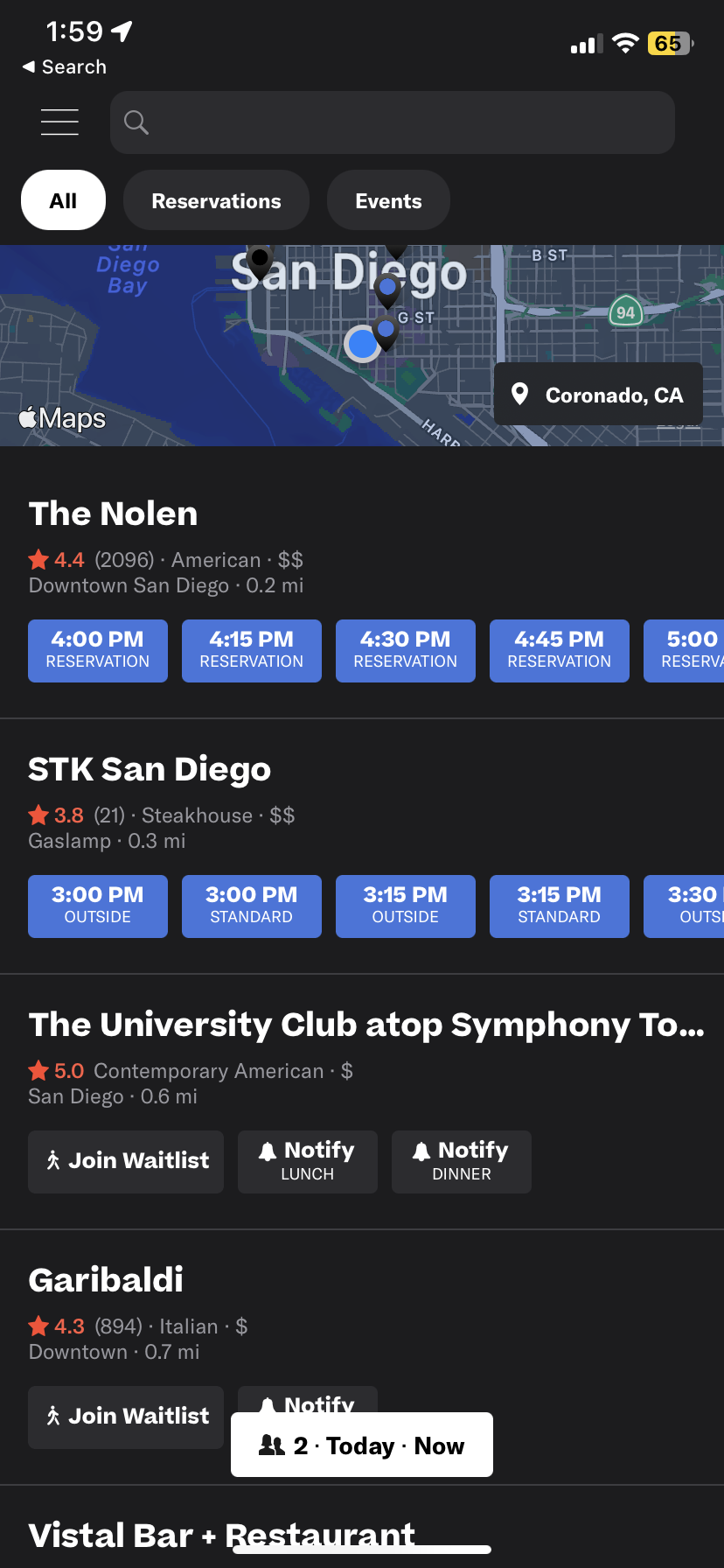
Extremely time-specific. Actionable. Ratings & details suppressed with emphasis on making a reservation at a convenient time/location. Not ideal for discovery. Not very inviting or engaging. (Resy)
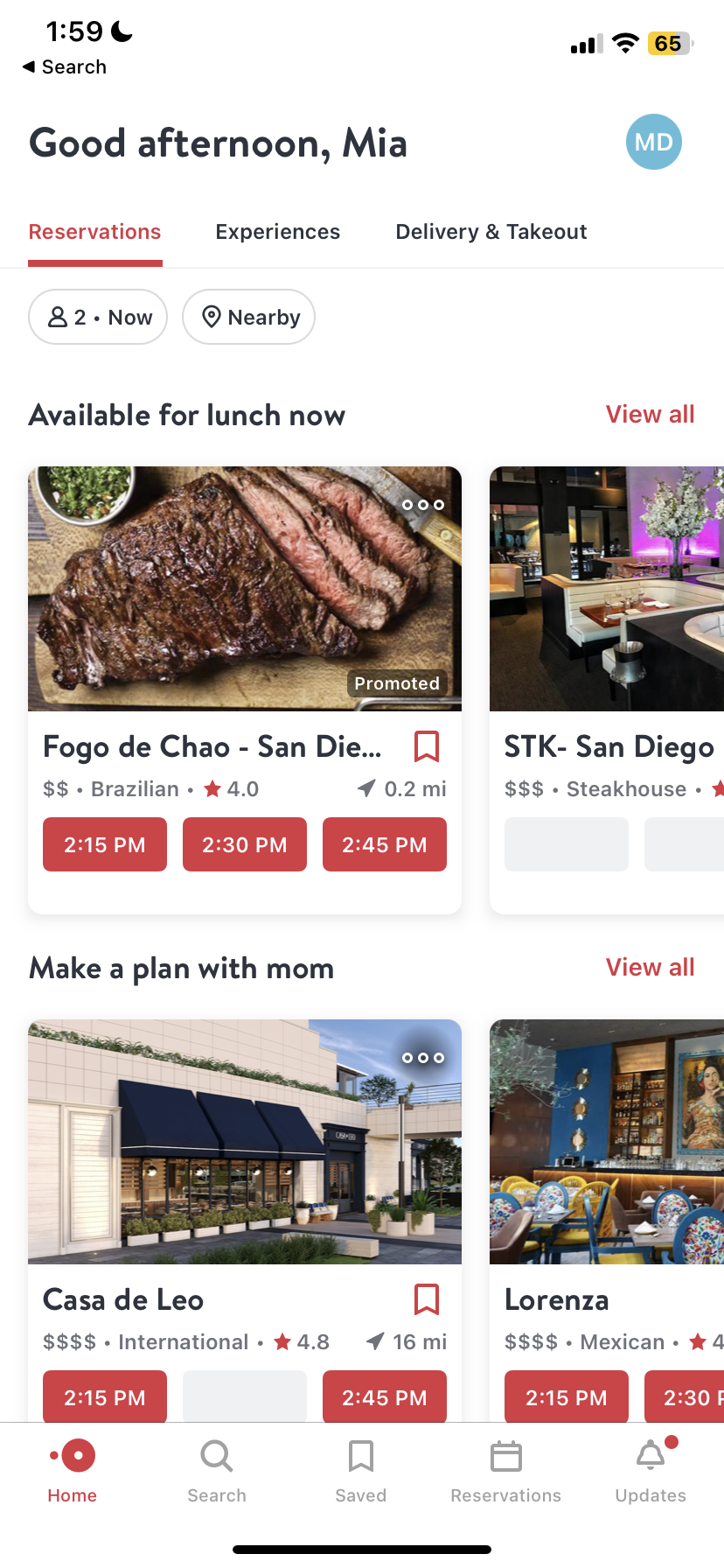
Very time-specific. Helps user know immediately what is available and when. Primary image (of food) appealing. Looks clean and professional. (OpenTable)
Step 4 · User Journeys
The next step was determining the user’s journey and thinking through the user’s mindset and goals. We started with the consumer browsing/booking experience before diving into creators.
Thoughts to consider:
What are the user’s priorities?
discover new/popular/tasty restaurants for immediate and/or future booking
find a nearby reservation
find a reservation at a particular time
satisfy a craving (in the mood for Thai, pizza, ice cream, etc.)
user personas
I defined two user personas. Both GenZ/zillennials eager to make a reservation with slightly different motivations
Mikaela wants to hit up the trendiest spots for the “ambiance” and to get a good photo/video for her social media
Michael is more focused on making a reservation at the right time either for a date or to meet up with family that’s in town visiting
user flow diagram
I designed a flow chart to map out where a user could begin (TikTok, IG, their own brain) and their journey to book a reservation. For purposes of this project, we were focused on an experience that did not (yet) require login.
Step 5 · Explorations
I started mocking up some ideas for the feed & browsing experience

This early exploration prioritized restaurant details with a call to action to book a reservation and then dive further into more videos with "view all." We also removed the navigation in favor of a "back" button to prioritize the booking CTA.
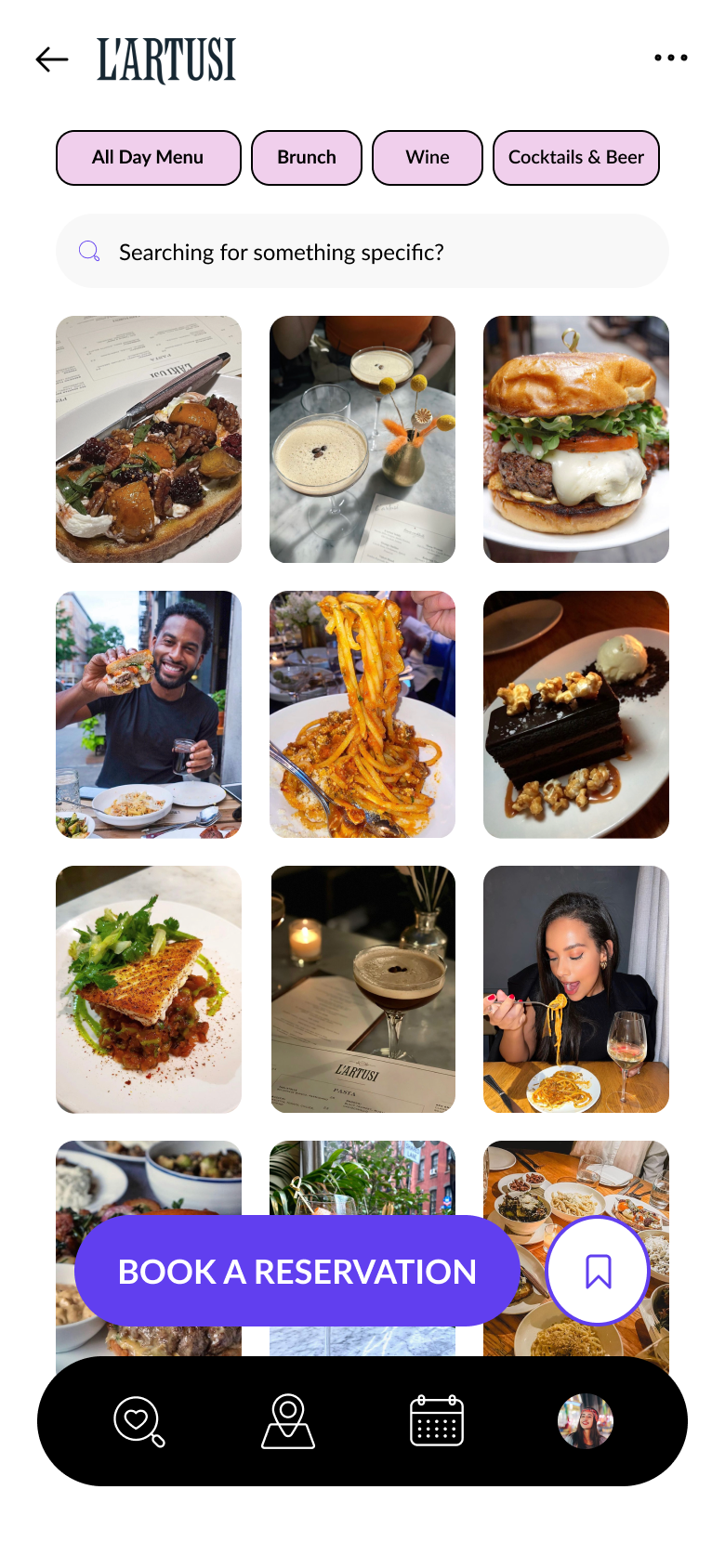
This is the "view all" page that made it easy to go back to the restaurant details and had sticky "Book a Reservation" and "bookmark" buttons as calls to action to the user.

Based on some initial feedback from the CEO, we decided to try a full-bleed visual for the feed to make it a more immersive experience.

This exploration used a collapsed "details" dropdown at the top to put more focus on the video feed.

This UI removed the filter tags and moved the "favorite" option to the top for a cleaner look & feel. We also brought in the availability for a quick snapshot of what times the user could book a table.

This view added an icon to the booking button to explore tying in some visual variety.

The user could expand for more details about the restaurant, more like Yelp - complete with reviews and a link to the menu.
Step 6 · User Testing
At this point, I designed a clickable prototype for the CEO to get some feedback on the experience. Our goal was to see how consumers responded to the app, if it felt like something they would use - and also if it felt intuitive. This feedback was important as ultimately consumer demand would drive interest for restauranteurs to adopt the app and justify designs for a booking backend/admin experience.



